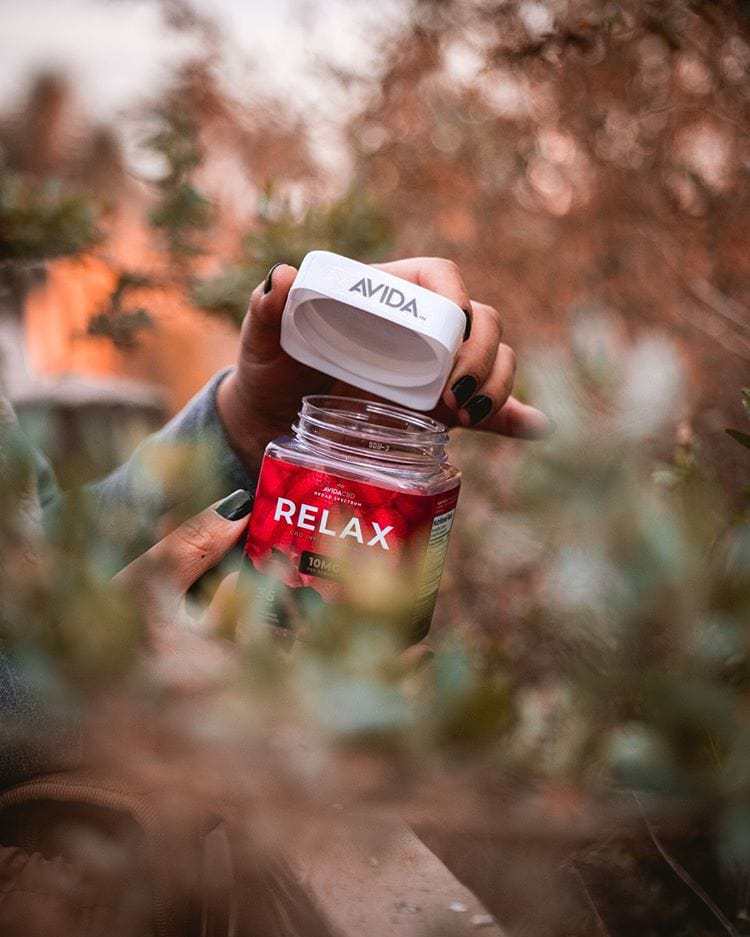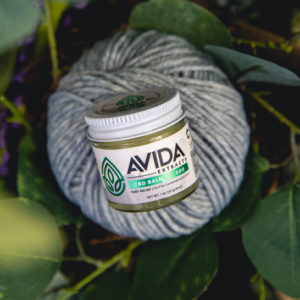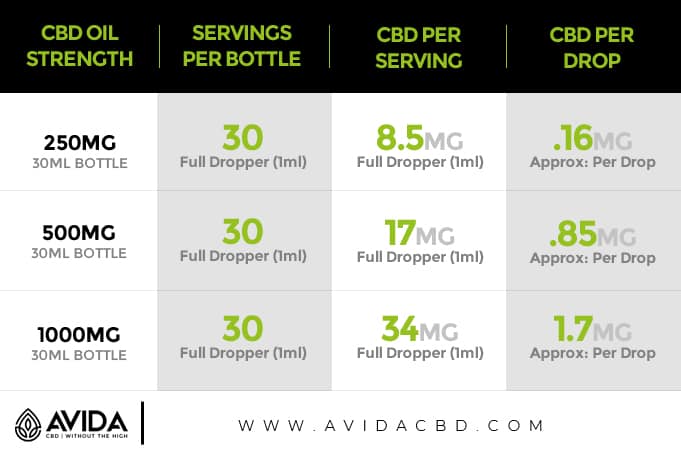If you’re about to try CBD products for the first time, you’re probably overwhelmed by the available number of choices.
Currently, CBD is available in a variety of different forms. This includes vape juice, oils, CBD gummies, topicals, and capsules. The most common method of consumption is via CBD oils, which can easily be taken sublingually, added to food, or mixed in with your favorite smoothie.
With CBD growing in popularity on a global scale, the range of products available means that there’s a product to suit everybody.
In this guide, we’ll discuss how to take CBD. Next, we’ll look at each of the different forms of CBD, their pros and cons, and how to calculate the best dosage for your needs.
Finally, we’ll discuss some best practice tips for taking CBD, before wrapping up by answering some frequently asked questions.
What is CBD?
CBD (cannabidiol) is a natural compound derived from cannabis and hemp plants. The majority of CBD used in popular supplements is extracted from hemp strains because they are naturally high in CBD and low in THC. This is ideal because THC is a psychoactive compound responsible for the ‘high’ feeling that marijuana use produces.
CBD is extracted from hemp flowers using a variety of processes depending on the manufacturer. Besides CBD, the hemp plant contains a host of additional beneficial compounds.
This includes over 100 terpenes, amino acids, flavonoids, and other minor cannabinoids. When these compounds are supplemented together, they work in synergy and complement one another’s effects within the human body. This process is known as the ‘entourage effect’ throughout the wellness industry.
CBD is widely regarded as safe throughout the medical and scientific community. According to a 2017 report published by the World Health Organization (WHO):
“In humans, CBD exhibits no effects indicative of any abuse or dependence potential.
How to Take CBD
As CBD usage increases and the popularity of the supplement grows, there are many different ways to take CBD. How to take CBD oil, topicals, edibles, vapes, and capsules. Each method of consumption has its unique advantages and disadvantages. However, how you take CBD ultimately boils down to personal preference based on your needs, desires, and lifestyle.
When you decide how to take CBD, it’s worth remembering that different methods of consumption provide varying absorption rates, bioavailability, and longevity in terms of their effects on the body.
Below, we’ve listed the most popular ways to take CBD and the pros and cons that these methods offer:
CBD Oils
Pros:
- When ingested sublingually (beneath the tongue), CBD oils provide high bioavailability and quick absorption. This is because the sensitive capillaries beneath the tongue lead directly to the bloodstream, meaning the oil can bypass your digestive system.
- CBD oils are easy and straightforward to use.
- They are also versatile and can easily be added to your favorite food or beverage.
- With CBD oils, it’s very easy to calculate the dosage by filling the dropper with the desired daily dose and administering the liquid throughout the day.
Cons:
- For some, the taste of hemp/CBD oil isn’t enjoyable.
- Others dislike the process of ingesting the oil sublingually, finding the method inconvenient compared to alternative ways of ingestion.
CBD Gummies/Edibles

Pros:
- Edibles provide a convenient way to add CBD to your daily diet.
- They are often flavored and tasty.
- They can be discreetly eaten at regular intervals throughout the day and night.
Cons:
- Gummies and other CBD edibles have low bioavailability and absorption rates as they must be processed via the digestive system.
- Not all edibles are suited to special dietary requirements such as veganism or coeliac allergies.
- Some edibles have high sugar content and may interfere with diets.
- Compared to alternative methods of consumption, edibles can contain significantly lower doses of CBD.
- Some edible products include sweeteners and other artificial ingredients.
Vape Juice

Pros:
- Vape juices are inhaled and absorbed instantly via the lungs, giving them the highest rate of bioavailability and absorption compared to alternative methods of consumption.
- The effects of CBD vape juices can be felt almost instantaneously.
- Vapes are portable and easy to consume when on the go.
Cons:
- When CBD is vaped, the duration of its effects is shorter compared to ingesting orally.
- To use these products, a vaping device is necessary.
- Some people are uncomfortable with vaping as it’s closely associated with smoking.
Capsules
Perhaps the most traditional and convenient way to take CBD is via a capsule. This method of supplementation has been around for years, and therefore thousands of people are familiar and comfortable with capsule supplements.
Pros:
- Ingesting capsules if probably the most convenient way to supplement CBD.
- Capsules are odorless and tasteless.
- Most people will have experience taking medications or supplements in capsule form. Therefore, this method is non-intimidating.
- Capsules are a convenient way to track dosage.
Cons:
- Before the CBD starts to work, it must pass through your digestive system, and this can take up to two hours.
- The CBD must also pass through the liver, which will work to reduce its concentration before the supplement enters the bloodstream.
Topicals

Pros:
- Useful for soothing dry and flaky skin.
- Targeted application for external areas of the body.
- CBD topicals can be fixed with other natural oils and creams to combine enhanced effects.
Cons:
- Topicals do not enter the bloodstream and therefore are only used to target specific exterior areas in the body..
- Some topicals can be messy, taking their time to absorb into the skin thoroughly.
Dosing Safety

Concentration (strength) refers to the amount of CBD that any given product contains. Generally, CBD strength is measured in milligrams (mg). This is not to be confused with dosage, which indicates the amount of CBD in each product serving.
For example, if a bottle of CBD oil has a 1000mg concentration and has 30ml of liquid inside, this means that every 1ml serving should contain roughly 34mg of CBD.
For the majority of people, the ideal dose of CBD depends on why they are taking CBD in the first place.
A person’s body will often play a role in how little – or how much – CBD affects their body. In general terms, heavier people will require higher doses than lighter people. However, we all have different metabolic rates. So, as we recommended earlier, start low and go slow.
Some CBD users may develop a tolerance if they take CBD products every day. Tolerance can cause reduced effects from taking the same dosage. In these instances, larger doses may be required to achieve the desired impact from CBD supplementation.
By using the criteria mentioned above, CBD users should be able to estimate a suitable starting dosage with any CBD products.
Best Practice Tips for Buying CBD Products
Before you purchase your first CBD product, we recommend researching the following questions:
Does the company have publically available lab reports available?
Here at Avida CBD, we take pride in the quality of our CBD products. For this reason, we offer full transparency regarding lab testing our products for quality and purity. A professional CBD manufacturer should provide customers with easily accessible information concerning the ingredients of their products. We recommend searching a company website or reaching out to their customer services team to make sure products are pesticide and chemical-free.
2. Are the products organic, and do they use the whole plant?
Organic CBD products are the purest and healthiest available on the market. We recommend purchasing products derived from organic hemp. When you take a look at a company’s lab reports, there should be negative levels of toxins or chemicals present.
Anecdotal reports claim that whole-plant CBD extracts like a Full Spectrum CBD oil are generally better than isolated extracts. This is because the terpenes and additional trace cannabinoids work together to produce a synergistic effect on the body. For this reason, we strongly recommend investing in whole-plant CBD products.
3. Is the amount of CBD in the product labeled and verifiable?
The CBD industry is yet to be regulated, and therefore CBD levels and bottle sizes all differ from company to company.
Consequently, it can be challenging to know whether or not the product that you purchase is a good value for the money. We recommend products that are clearly labeled with regards to strength and verified by third-party lab testing.
4. Are there quality standards in place?
Safety cannot be guaranteed if there are no quality standards in place. For this reason, we recommend asking any company that sells CBD products for proof of their quality standards. This can refer to any official verification that they have in place to prove that their products are safe for human consumption.
5. Is their website information clear, and do they have online reviews available?
Because the CBD industry is relatively new and growing rapidly, there is a lot of misleading information online. Many companies purchase CBD in bulk and rebrand it as their own product. Shop around, and if the company that you are considering buying from has no reviews and little product information, we recommend steering clear. Online product reviews provide a wealth of knowledge from other consumers who have already tried the products on sale.
Frequently Asked Questions
Can I vape CBD oil in an e-cigarette or a vaporizer?
There are several ways to benefit from taking CBD. Many people use CBD oils as tinctures; others prefer to take capsules or ingest edibles.
Although each method of taking CBD has its advantages, nothing is quite as effective and instantaneous as vaping CBD oil.
That said, not all CBD oils can be used for vaping. We advise against trying to vape regular CBD oil, as the active ingredients are not designed to provide vapor for inhalation.
Additionally, you could damage your vaporizer. Vaping requires specialized CBD vape juices, manufactured for use with either a vape mod, cartridge or vaporizer pen.
Vape juices are a quick and efficient way to get CBD straight into the bloodstream via the lungs. Vape juices are made from hemp oil.
Hemp oil is generally extracted from the cannabis Sativa plant. The most prevalent form of cannabis Sativa, is commonly known as industrial hemp. The industrial hemp plant was historically widespread in the United States. In fact, George Washington was once a hemp farmer!
However, the prohibition of cannabis plants in the 20th century attached negative connotations and undeserved stigma to the hemp plant.
Industrial hemp contains cannabidiol (CBD). CBD is a non-psychoactive cannabinoid. THC is also a cannabinoid, but THC has psychoactive properties. The industrial hemp plant contains less than 1% THC content.
Can CBD oil make you hungry?
No, CBD alone cannot make you hungry. Although there has been some speculation in the press claiming that CBD may increase hunger, this is not the case for pure CBD. If you take a full-spectrum CBD supplement, the trace amounts of THC that may be present could have an impact on your appetite.
This is particularly relevant for people that take large doses of full-spectrum CBD products daily. The more THC that is ingested, the more likely it is that your appetite will increase.
CBD promotes a state of balance in our endocannabinoid systems via a range of enzymes and receptors. However, THC stimulates CB1 receptors that are located in areas of the brain that link to appetite and mood. This is where the association between smoking cannabis and hunger is attributed.
The concentration of THC present in your CBD oil will have a direct impact on how hungry you feel after consuming your CBD product. Low levels of THC could invoke the desire to eat, only if large quantities of full-spectrum oil are consumed. If you do not want your appetite to increase, consider the following factors:
What species has been used as the source of your CBD oil?
Marijuana is much higher in THC content than hemp. Therefore, if your CBD product is full-spectrum, and has been derived from marijuana, it’s likely to increase your appetite.
However, if your CBD has been derived from the hemp plant, there should only be minimal traces of THC. In most cases, full-spectrum CBD oil will have a negligible impact on your appetite, especially if you stick to the recommended dosage a few times a day.
If you are concerned about the impact of THC on your appetite, we recommend purchasing a broad-spectrum CBD oil. These products retain all the terpenes and beneficial compounds, but they are entirely devoid of THC, even in trace amounts.
How does CBD oil vape make you feel?
Vaping CBD is one of the most popular ways that people like to ingest CBD. Those that regularly vape CBD have reported that they feel more relaxed. One of the main reasons that people decide to vape their CBD is the speed of the onset of its effects.
This is because, out of all the ways that CBD can be ingested, vaping provides the quickest effects. Vaping CBD is also the most efficient manner by which to intake CBD out of all the delivery methods such as sublingual, topical, or oral ingestion.
This is because of human biology. CBD needs to reach the cannabinoid receptors present in the brain and body. To do this, CBD must enter the bloodstream. When CBD is ingested, the chemical takes longer to reach your blood as it must pass through the digestive system and be metabolized by the liver, before making its way into the bloodstream.
The lungs work much differently, offering fast and effective delivery of CBD as the vape is passed through membranes as it is inhaled, entering the bloodstream within seconds. The only shortcoming of vaping CBD is that the effects of vaping do not last as long as oral ingestion.
However, this isn’t a problem for many users as they can just dose as required using their vape pen.
There is no right or wrong way to take CBD oil. Some people prefer edibles or tinctures, whereas others prefer to vape. Some people try out all the different methods until they find one that suits their needs.
For people in need of faster effects, they should try vaping. For those that prefer to start slowly, CBD capsules may be a good starting point on their CBD journey.
Conclusion
There are many different ways to take CBD products. We recommend trying several different methods until you find one that suits your specific requirements. When purchasing CBD for the first time, we strongly advise buying from a reputable company that tests their products and offers full transparency around the ingredients that they use.
Watch out for ‘hemp’ products for sale online. Generally, these are made using hemp seed oil and will not provide significant amounts of CBD. These products will not have CBD listed on their label.
Finally, stay safe and speak to your physician before supplementing with CBD if you currently take any prescription medications.

